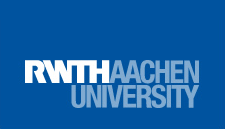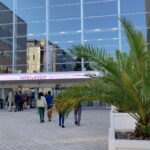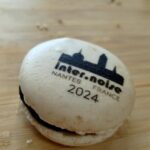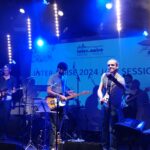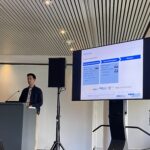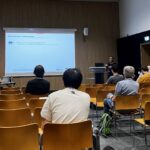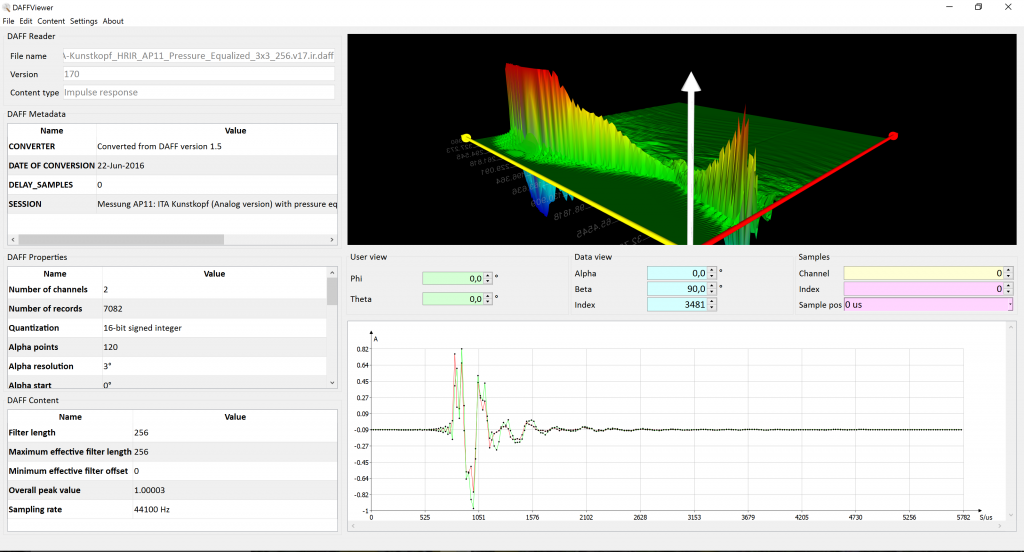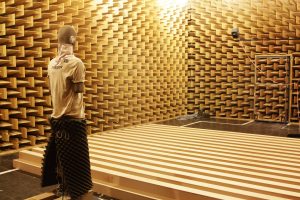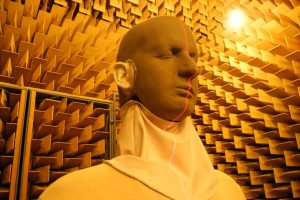Kategorie: ‘Research software’
Research data publications at IHTA
In recent years, the importance of open data in academic research has become increasingly prominent. Open data in the context of scientific research refers to the practice of making datasets publicly accessible, either as separate data publications or as supplementary material along with the research article. Making such (documented) data available allows other researchers to build upon existing work or to verify findings. This makes research more efficient, transparent and reproducible. Research data publications are usually assigned a DOI, providing a permanent link to the dataset, which can be cited properly in related scientific work.
Researchers from the Institute for Hearing Technology and Acoustics have published several datasets in the past years – many of them being different kind of HRTF datasets, but also other acoustic measurements, input data for simulations and stimuli for listening experiments. To give a better overview of these data publications, we recently updated the corresponding section on our website, which also lists IHTA’s research software. Further datasets, if published on the Zenodo platform, can also be found in IHTA’s Zenodo-Community.
Virtual Acoustics: Release Version 2024a
The newest version of our auralization framework Virtual Acoustics (VA) was just released. The new version comes with a reworked python interface (VAPython) which is more user-friendly and now has *NatNetTracking* support. Also, there are some minor improvements in the audio rendering process.
The current as well as all former releases are now hosted on Zenodo, which allows citing a specific VA version without any ambigouity.
Further information on VA can be found on the project’s website. This includes a detailed changelog.

Inter-Noise 2024 in Nantes
This year’s Inter-noise conference took place from August 25th to 29th in Nantes, France. More than 1500 delegates participated in this conference and presented interesting research in the field of acoustics and noise. Highlights of the conference included a plenary talk by Arnaud Can and Pierre Aumond (Joint Research Unit in Environmental Acoustics at Gustave Eiffel University, Nantes, France) on advanced characterization of urban sound environments and a keynote lecture about the child perspective on noise exposure and health effects, held by Kerstin Persson Waye from Gothenburg University, Sweden, who is also collaborating with IHTA in the Equal-Life project.
Members of IHTA travelled to the conference and presented the following research papers:
- Chalotorn Möhlmann: Validation measurement of vehicle pass-by models for dynamic urban environments (results of the BaLSaM project)
- Marco Berzborn: Inference of the acoustic properties of transversely isotropic porous materials
- Lara Stürenburg: Loudness and preference judgments for noises of a heat pump (results of the LowNoise project)
- Joao Fatela (Guest researcher from the University of Campania Luigi Vanvitelli, Naples, Italy):
An experimental setup to investigate relevant validation parameters for the auralization of commercial aircraft flyovers in complex urban contexts
Directly after the closing ceremony of the conference, the satellite workshop “Unlocking the Potential of Open Research Software in Acoustics at Inter-Noise 2024” started. This event was organized by Maarten Hornikx and Huiqing Wang, from the Building Acoustics team of Eindhoven University of Technology, and included interesting exchanges and presentation on the development, maintenance, documentation and distrubtion of acoustics-related open-source software. As one of four invited speakers, Lukas Aspöck held a presentation about IHTA’s auralization software Virtual Acoustics. The slides of this presentation are available for download (CC BY-SA 4.0).
Next to insightful overview presentations by Maarten Hornikx and Huiqing Wang, further successful research software was presented: Pyroomacoustics by Eric Bezzam, NoiseModelling by Pierre Aumond and SoundScapy by Andrew Mitchell, along with many examples of challanges and best practices for open research and open-source software development. Many thanks to Maarten and his team for the invitation and the organization of this exciting event.
- Entrance of the InterNoise venue. Photo: Lukas Aspöck
- Exhibition area at Internoise. Photo: Simon Bianchetti.
- Internoise 2024 Macarons. Photo: Lukas Aspöck
- Kerstin Persson Waye at her keynote presentation. Photo: Simon Bianchetti.
- Jam Session @ InterNoise. Photo: Lukas Aspöck
- Lara during her presentation. Photo: Lara Stürenburg.
- Chalotorn during his presentation. Photo: Carolin Schliephake.
- Lukas during the research software workshop. Photo: Enkela Alimadhi
Jahrestagung der Gesellschaft für Musikforschung 2023
Im Rahmen der Jahrestagung der Gesellschaft für Musikforschung 2023 in Saarbrücken fand am 5. Oktober 2023 ein Marktplatz aktueller Forschung statt, in der Methoden und Werkzeuge für die digitale Musikforschung präsentiert werden konnten. Im Zuge der Zusammenarbeit mit Prof. Stefan Morent von der Universität im Projekt „Sacred Sound – Sacred Space“ demonstrierten unsere Mitarbeitenden Carolin Breuer und Pascal Palenda die Möglichkeiten, Räume akustische zu simulieren und auralisieren, in virtuelle Räume hinzusingen oder zu musizieren, sowie Räume in der Virtuellen Realität mit Hilfe eines Head-Mounted-Displays interaktiv akustisch-visuell erlebbar zu machen.
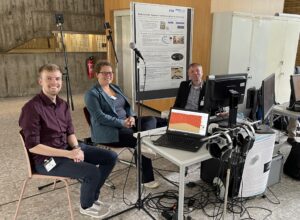
Stand bei der Jahrestagung für Musikforschung. Foto: Martin Albrecht-Hohmaier
Virtual Acoustics project launch
The Virtual Acoustics (VA) open source project has been launched and the official website can be accessed via
http://www.virtualacoustics.org

The website provides an overview of VA and documentation on interfaces and usage. In the download section, a ready-to-use VA preview package for Windows can be obtained. The entire project is open source and can be used for reproducible research.
OpenDAFF v17 released
A new stable version of OpenDAFF (v17) has been released. A Windows package is available for 64-Bit platforms that includes the DAFF libraries as well as the DAFFViewer application to inspect DAFF content. Also, more and more HRTF datasets are becoming available, especially because you can now convert SOFA files into DAFF content using the ITA-Toolbox and it’s itaHRTF class.
Read on about OpenDAFF at www.opendaff.org!
Web-based VR tool for online audio-visual studies
The members of the SONORUS (Urban Sound Planner) project have published an interesting approach to conduct audio-visual studies using Unity and a conventional web browser. Fanyu Meng did some supporting work for procedural sound synthesis. For more information and the link to participate, see here:
Web-based virtual reality tool for evaluation of urban sound environment
ITA-Toolbox for Matlab moved to a free accessible GIT repository
The famous and heavily used ITA-Toolbox for Mathwork’s powerful Matlab prototyping application has been developed at ITA internally since around 2008. For some time, a free version is available for download from the website http://www.ita-toolbox.org.
Now, the repository moved to the RWTH Aachen University GIT server and the head revision of current developments is directly accessible for checkout and download (read-only) via following link:
http://git.rwth-aachen.de/ita/toolbox
If you would like to participate and merge bug fixes or useful extensions for the research community, external users can authenticate with a GitHub account. Please ask the developers for access using the web interface of the GIT repository to create your own branch and submit a merge request.
SEACEN International Round Robin on Auralization
Researchers of the SEACEN project have officially launched the 1st International Round Robin on Auralization. In this extensive comparison of simulation and auralization tools, researchers, users and developers can contribute their results for nine different acoustical scenes including a variation of simple acoustical situations as well as typical room acoustical scenarios. Everyone is invited to particpate. In the first phase of the Round Robin, participants are ask only to use the provided input data. Deadline for the submission of the results is december 31st, 2016.
- Simple reflection scene
- Room acoustics measurement Berlin chamber music hall
- Measurement of binaural impulse responses using FABIAN dummy head
More information can be found on the offical Auralization Round Robin website.
